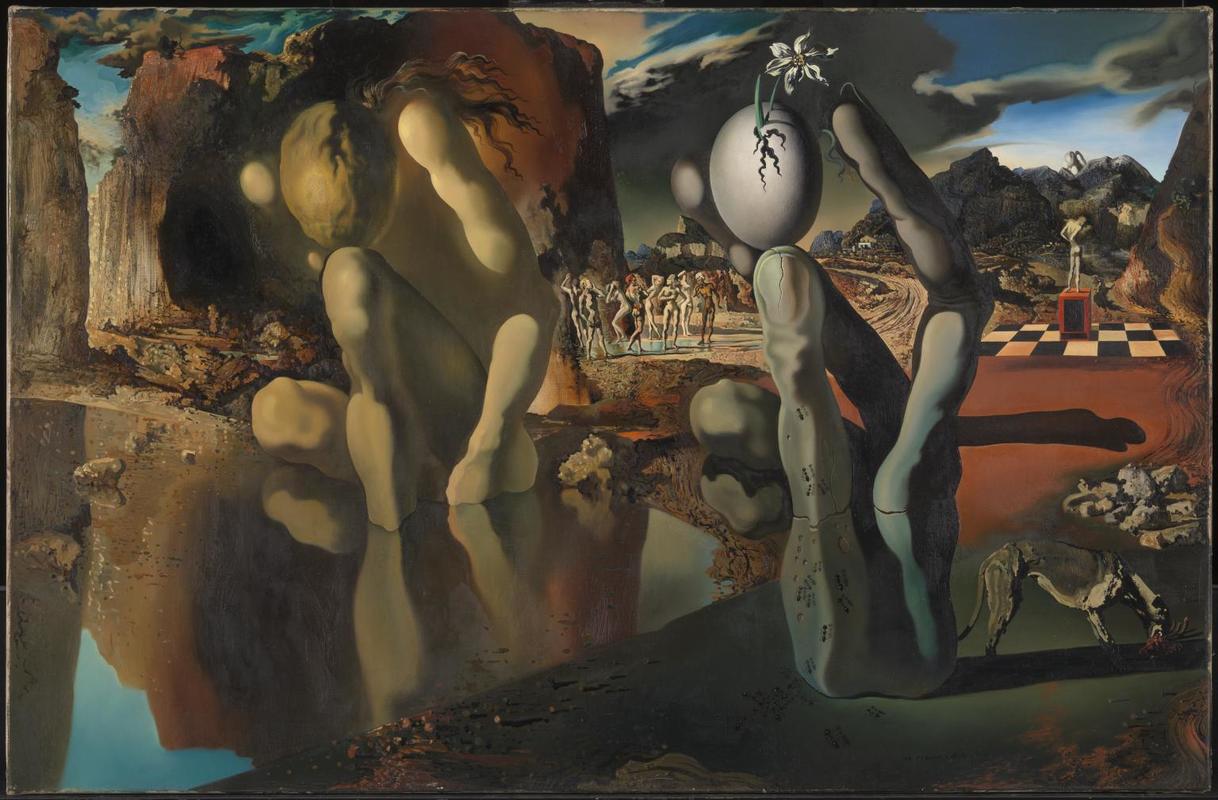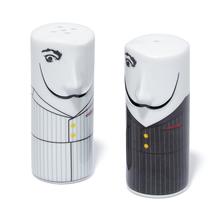More about Metamorphosis of Narcissus
- All
- Info
- Shop

Contributor
Most of Dali’s surreal paintings are certainly dome-scratchers when it comes to interpretation, but this one is kinda self-explanatory if you read the title.
It may seem at first glance that this painting is just a trippy mirror image of the grey and yellow forms in the foreground, but you gotta look closely at the background. Those aren’t just fillers back there. Dali put those in for a reason! They’re part of his four segments of Narcissus’s life and they’re telling a story too. Yep, it’s that same Narcissus from Greek mythology, whose name gave us that lovely term “narcissistic” which one applies liberally to those who take too many selfies or update their snapchat way too much. (Note: this term can also be applied to exes who started all those conversations only to hear themselves speak.)
Getting back to this Dali, let's start with the figure standing on the chessboard in the back. Clearly, that’s our protagonist, young Narcissus, who sees himself as the only important piece in the chessboard of life. Mostly because he thought he was super hot. Sound familiar? Well, it’s about to hit even closer to home. Legend has it that Narcissus thought he was too sexy to even take on a lover/partner. So he rejected many of the eligible wood nymphs that were vying for his attention. Pictured here as ladies in the background weeping, yet some also seem to be dancing. I’ll explain the second half in a moment. When Nemesis hears of Narcissus rejecting chicks left, right and centre, she decides to punish Narcissus. She shows him to a pool in which he sees his reflection and falls in love with it…only to find out later that the reflection cannot love him back. Dali shows that depressing thought and its effect on Narcissus in the yellow figure that is drooped over a pond. Getting a taste of his own unrequited love is too much for Narcissus and he ultimately ends up committing suicide. This is where the dancing ladies come in…some of these rejected lovelies are actually stoked that he’s dead.
Dali uses that last bit of Narcissus’s life (and death) to employ his paranoic-critical method, which I’ve explained once before in this review so don’t make me do it again. We think that grey hand is a reflection of the yellow body of Narcissus, or vice verse…but it’s actually just a hand. It could even be Echo’s hand, who was so sad when he rejected her that her body turned to stone. Those mountains in the back could also be an indication of her presence…cause that’s where you hear echoes, duh. Anyway, the dead, stony hand is holding up an egg out of which a flower hatches. And it’s not just any flower…it’s a narcissus! The ants crawling up are signature Dali and they show how beauty and the body are all ultimately meant to be maggot-fodder. There’s also a dog tearing up some flesh in the corner, which one assumes belongs to the late Narcissus.
Moral of the story: we all die no matter how pretty we are and consequently become manure for flowers that will be named after us. That last part may require some fact-checking, tho.
Sources
- “Salvador Dali – Metamorphosis of Narcissus Analysis”, Classical Arts Universe, http://classicalartsuniverse.com/salvador-dali-metamorphosis-of-narciss…
Featured Content
Here is what Wikipedia says about Metamorphosis of Narcissus
Metamorphosis of Narcissus (1937) is an oil-on-canvas painting by the Spanish surrealist Salvador Dalí. Originally titled Métamorphose de Narcisse, this painting is from Dalí's paranoiac-critical period and depicts his interpretation of the Greek myth of Narcissus. Dalí began his painting in the spring of 1937 while in Zürs, in the Austrian Alps.
Check out the full Wikipedia article about Metamorphosis of Narcissus













